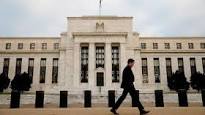NAHB Chief Economist Robert Dietz recently provided the following economic overview in his bi-weekly newsletter Eye on the Economy.
Interest rates have pulled back in recent weeks, as markets correctly anticipated a dovish Federal Reserve announcement in December. In fact, the Fed surprised by not only remaining on pause with respect to the federal funds rate (which was last increased in July), but also by revealing an estimated three rate cuts for 2024. NAHB is currently forecasting just two rate cuts in 2024: one 25 basis-point cut in the third quarter and one more in the fourth quarter.
Long-term interest rates responded positively to these developments. The 10-year Treasury bond has approached a 3.9% rate, down just about 100 basis points from October high levels. And mortgage rates have retreated below 7% for the first time since the middle of August. Inflation appears to be moving in the right direction as well, with the CPI growing at a 3.1% rate in November. However, policy makers should take note: Shelter cost growth accounted for 70% of the headline gain in November. Only additional construction of attainable, affordable housing will ultimately tame shelter inflation.
With the growing wave of good macro news, builder sentiment has turned the corner. While still gloomier than actual market conditions, the NAHB/Wells Fargo Housing Market Index increased three points in December to a level of 37. We expect continued improvement ahead. However, the index’s partial and, we believe, temporary disconnect from starts/permit activity is indicating that supply-side constraints continue to frustrate the market, and that larger builders are gaining market share over more capital-constrained private builders.
In contrast, single-family starts surged in November as rates moved lower. Single-family starts increased 18% to a 1.14 million seasonally adjusted annual rate. However, single-family starts are down 7.2% year to date. The multifamily sector, which includes apartment buildings and condos, increased 6.9% to an annualized 417,000 pace.
Lower interest rates and a lack of resale inventory helped to provide a strong boost for new home construction in November. However, it would not be surprising to see these construction data retreat in December because of last month’s accelerated pace and ongoing supply-side concerns (or the November data to be revised lower).
Nonetheless, the macro and housing data suggest next year will see gains for single-family construction, while a rise in the level of new multifamily rental completions will continue to hold back multifamily construction activity.

